Shoma Iwai
Layout-Corrector: Alleviating Layout Sticking Phenomenon in Discrete Diffusion Model
Sep 25, 2024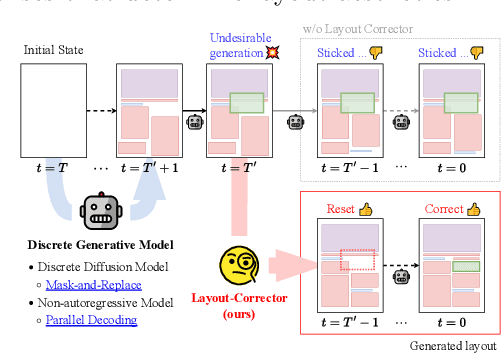



Abstract:Layout generation is a task to synthesize a harmonious layout with elements characterized by attributes such as category, position, and size. Human designers experiment with the placement and modification of elements to create aesthetic layouts, however, we observed that current discrete diffusion models (DDMs) struggle to correct inharmonious layouts after they have been generated. In this paper, we first provide novel insights into layout sticking phenomenon in DDMs and then propose a simple yet effective layout-assessment module Layout-Corrector, which works in conjunction with existing DDMs to address the layout sticking problem. We present a learning-based module capable of identifying inharmonious elements within layouts, considering overall layout harmony characterized by complex composition. During the generation process, Layout-Corrector evaluates the correctness of each token in the generated layout, reinitializing those with low scores to the ungenerated state. The DDM then uses the high-scored tokens as clues to regenerate the harmonized tokens. Layout-Corrector, tested on common benchmarks, consistently boosts layout-generation performance when in conjunction with various state-of-the-art DDMs. Furthermore, our extensive analysis demonstrates that the Layout-Corrector (1) successfully identifies erroneous tokens, (2) facilitates control over the fidelity-diversity trade-off, and (3) significantly mitigates the performance drop associated with fast sampling.
Controlling Rate, Distortion, and Realism: Towards a Single Comprehensive Neural Image Compression Model
May 27, 2024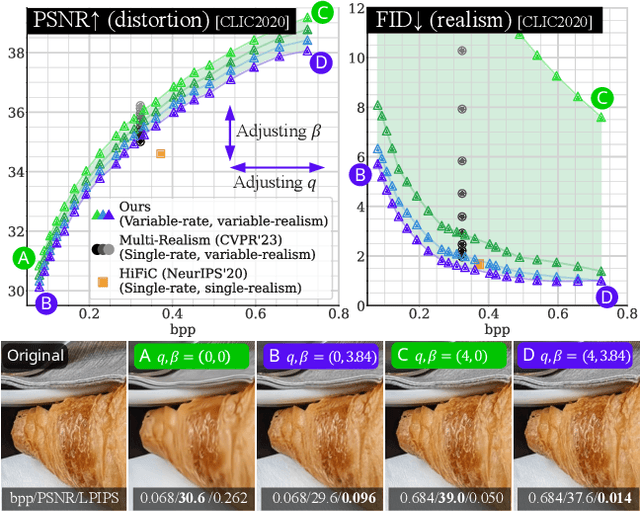


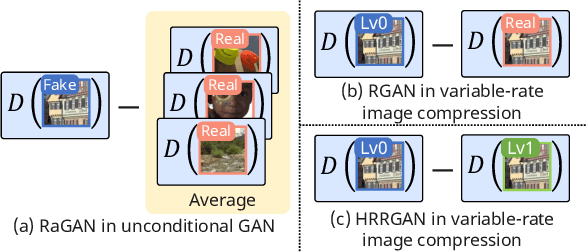
Abstract:In recent years, neural network-driven image compression (NIC) has gained significant attention. Some works adopt deep generative models such as GANs and diffusion models to enhance perceptual quality (realism). A critical obstacle of these generative NIC methods is that each model is optimized for a single bit rate. Consequently, multiple models are required to compress images to different bit rates, which is impractical for real-world applications. To tackle this issue, we propose a variable-rate generative NIC model. Specifically, we explore several discriminator designs tailored for the variable-rate approach and introduce a novel adversarial loss. Moreover, by incorporating the newly proposed multi-realism technique, our method allows the users to adjust the bit rate, distortion, and realism with a single model, achieving ultra-controllability. Unlike existing variable-rate generative NIC models, our method matches or surpasses the performance of state-of-the-art single-rate generative NIC models while covering a wide range of bit rates using just one model. Code will be available at https://github.com/iwa-shi/CRDR
Fidelity-Controllable Extreme Image Compression with Generative Adversarial Networks
Aug 24, 2020
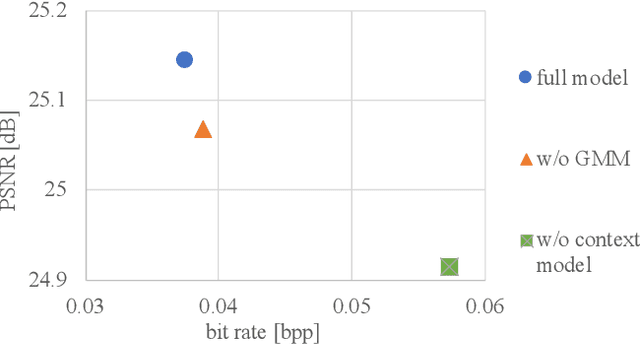
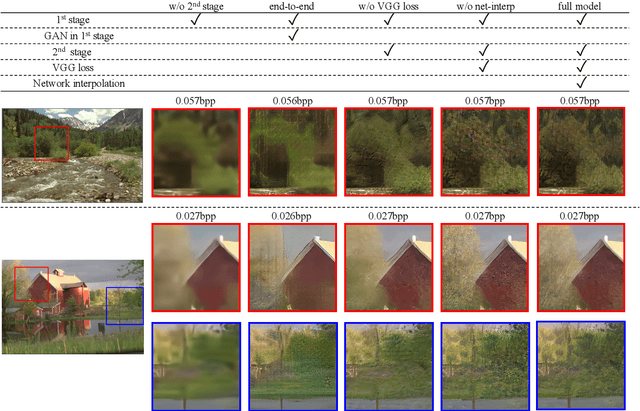
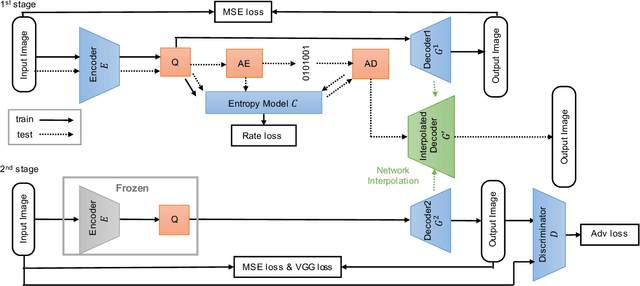
Abstract:We propose a GAN-based image compression method working at extremely low bitrates below 0.1bpp. Most existing learned image compression methods suffer from blur at extremely low bitrates. Although GAN can help to reconstruct sharp images, there are two drawbacks. First, GAN makes training unstable. Second, the reconstructions often contain unpleasing noise or artifacts. To address both of the drawbacks, our method adopts two-stage training and network interpolation. The two-stage training is effective to stabilize the training. Moreover, the network interpolation utilizes the models in both stages and reduces undesirable noise and artifacts, while maintaining important edges. Hence, we can control the trade-off between perceptual quality and fidelity without re-training models. The experimental results show that our model can reconstruct high quality images. Furthermore, our user study confirms that our reconstructions are preferable to state-of-the-art GAN-based image compression model. The code will be available.
 Add to Chrome
Add to Chrome Add to Firefox
Add to Firefox Add to Edge
Add to Edge